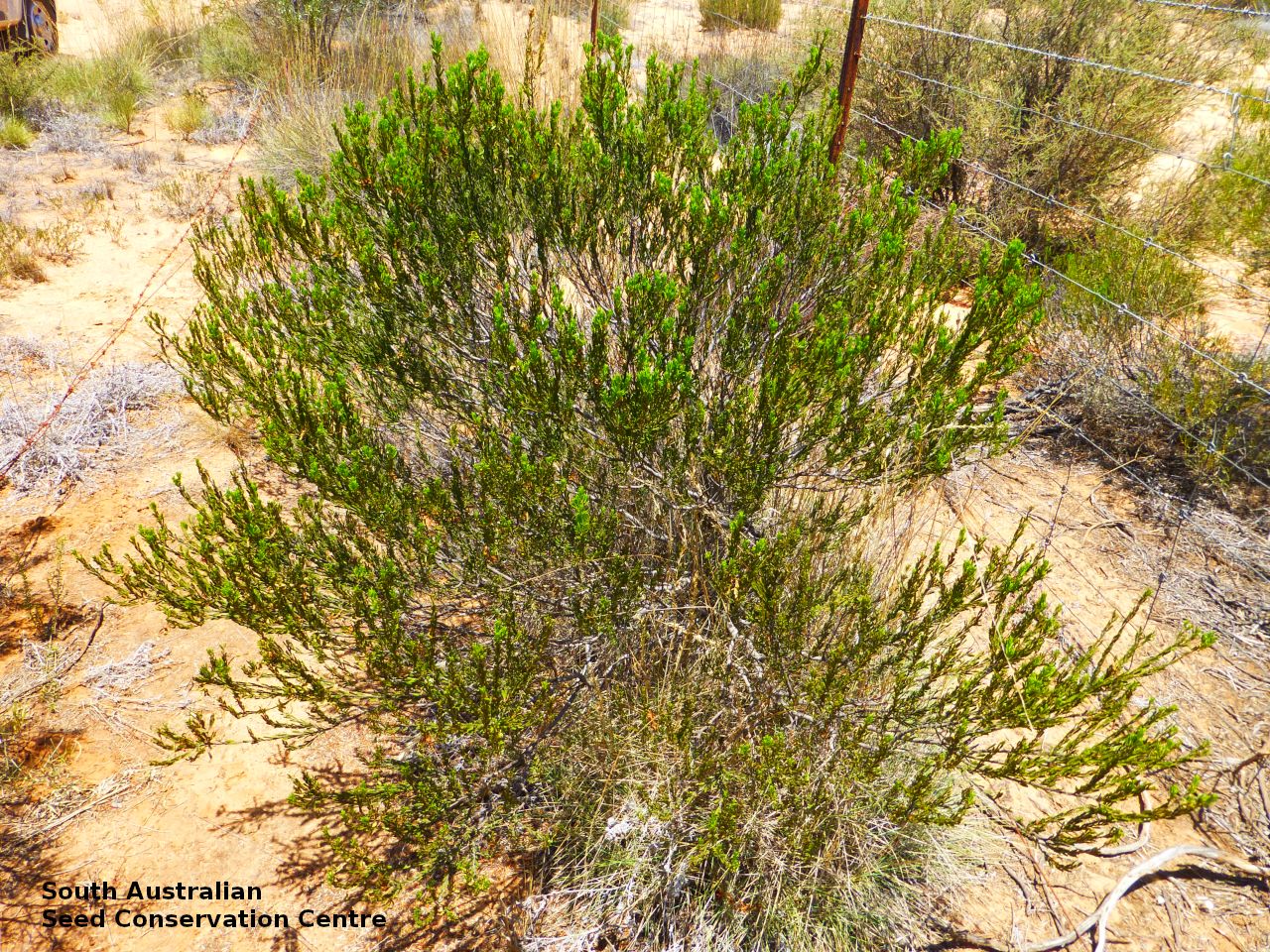
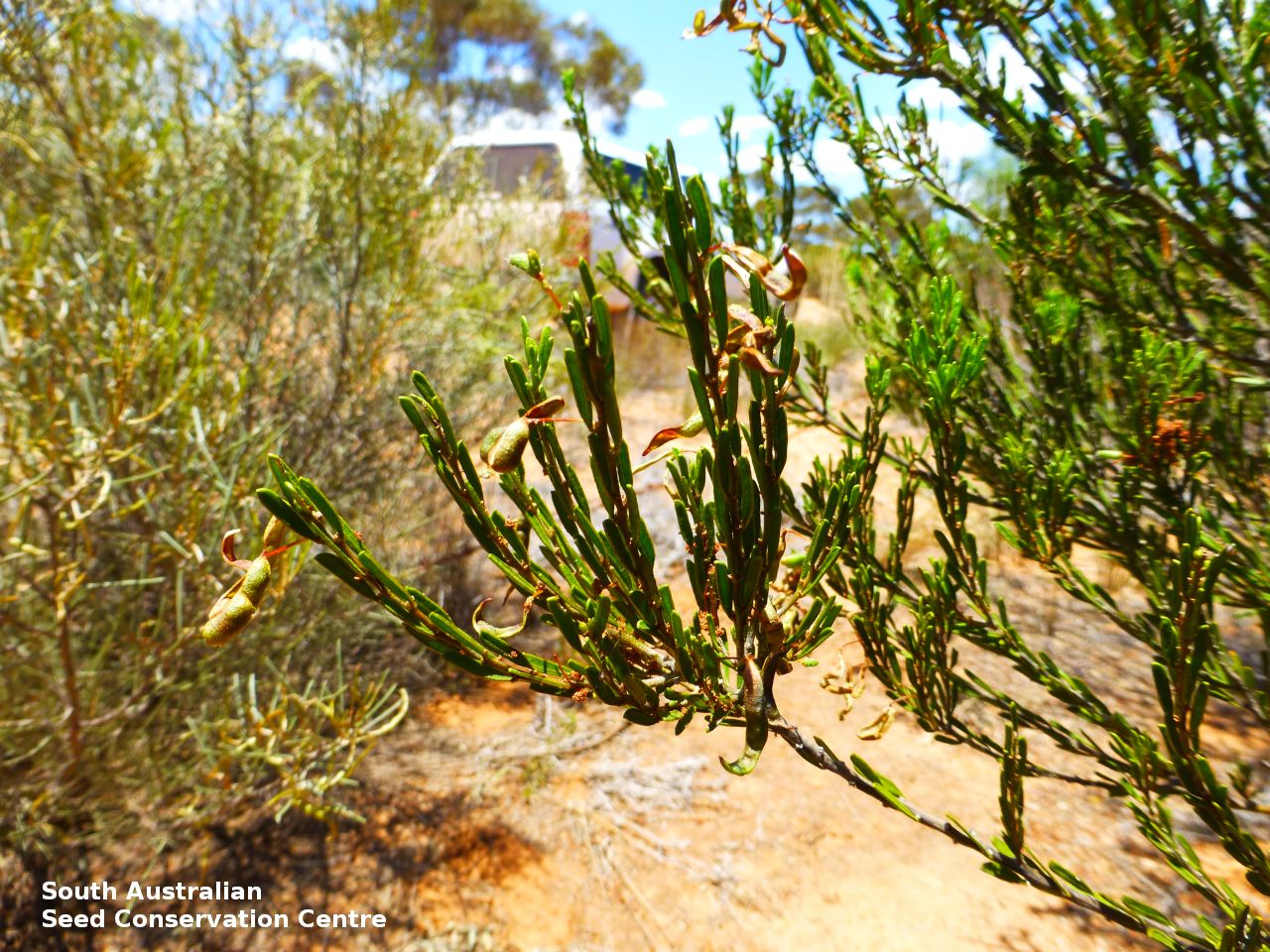
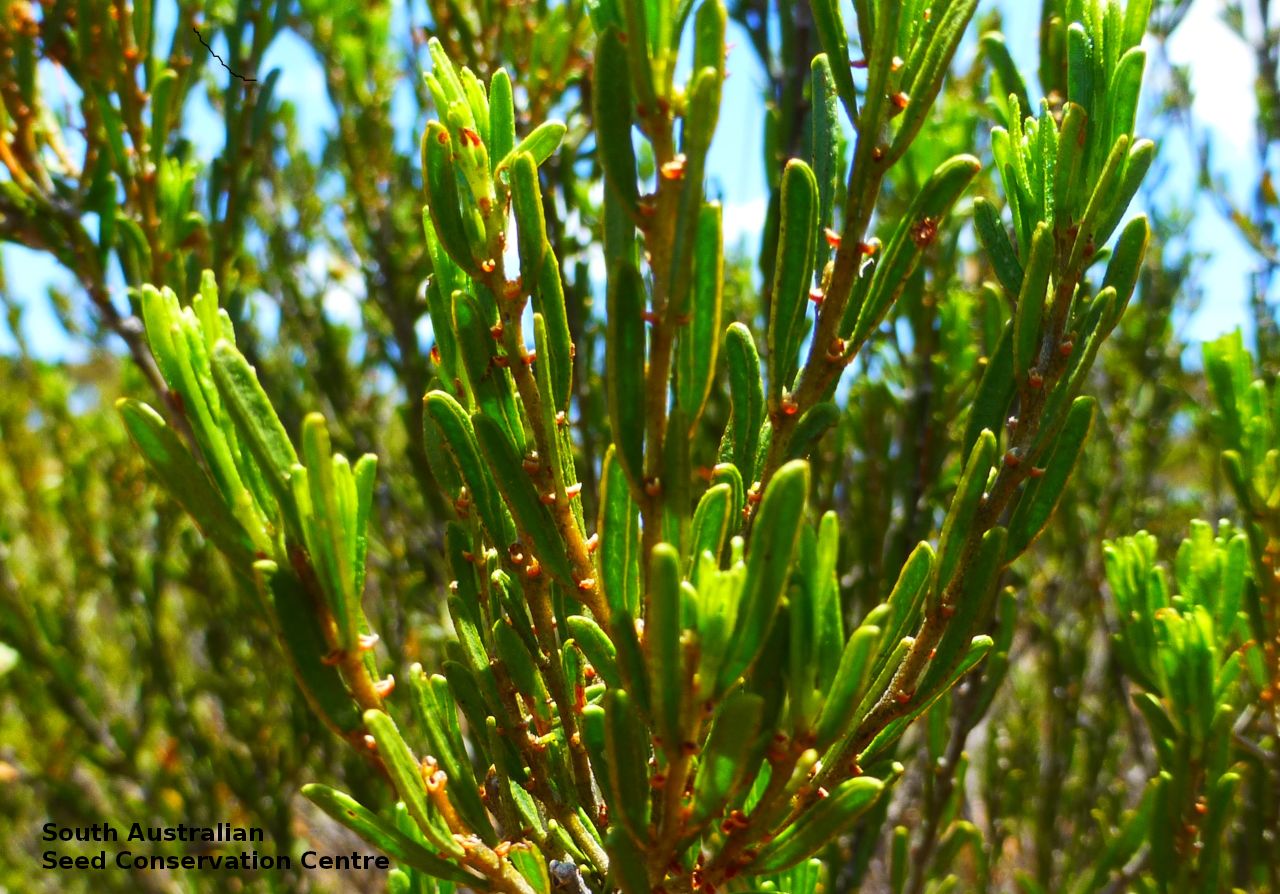
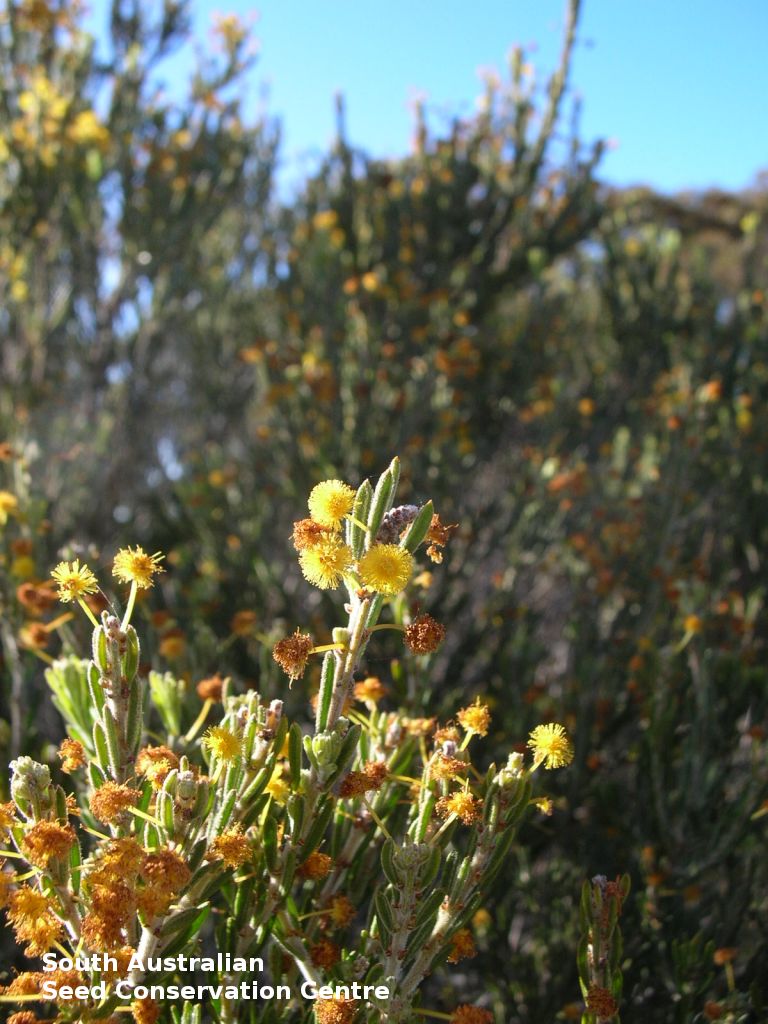
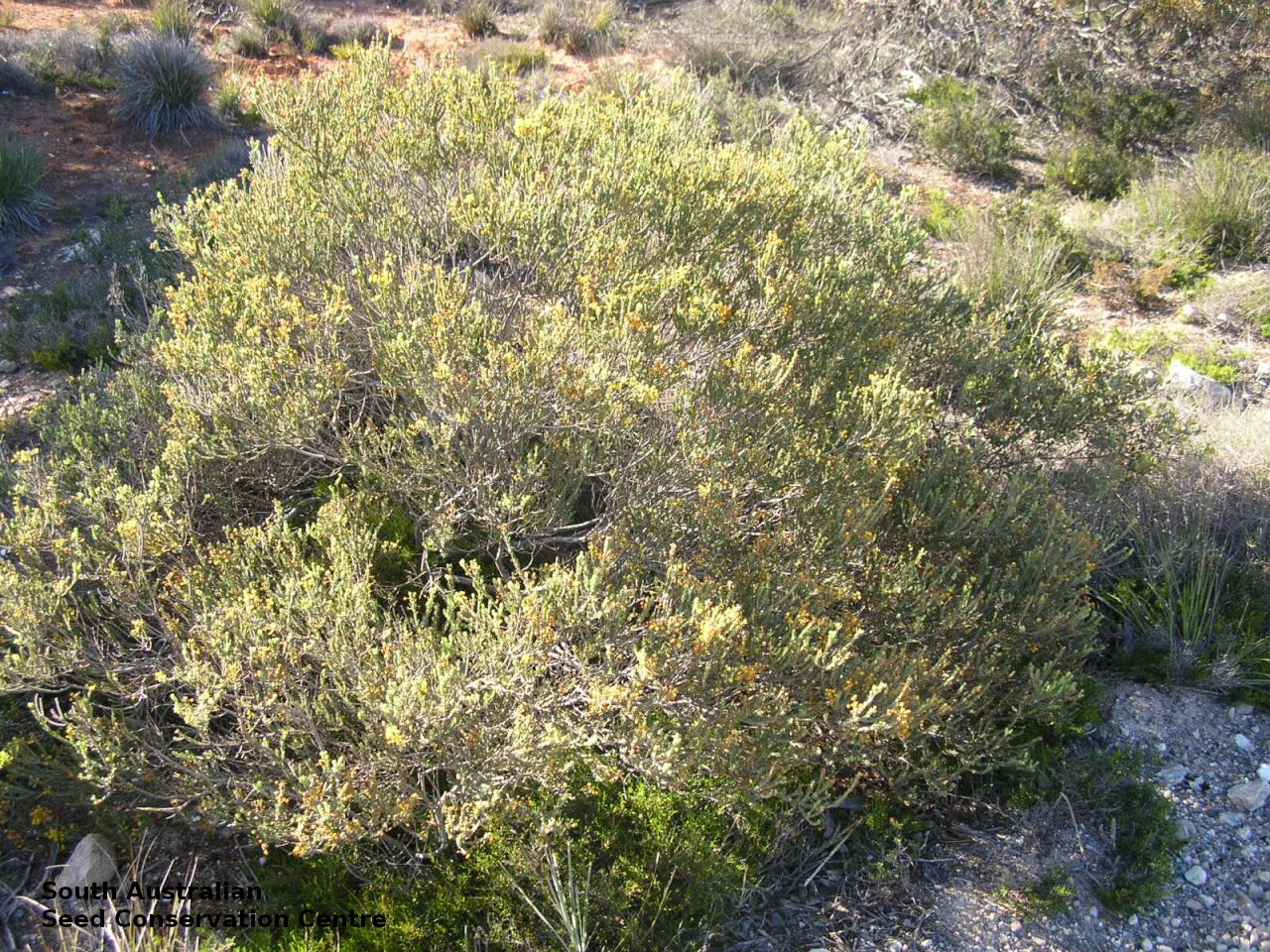
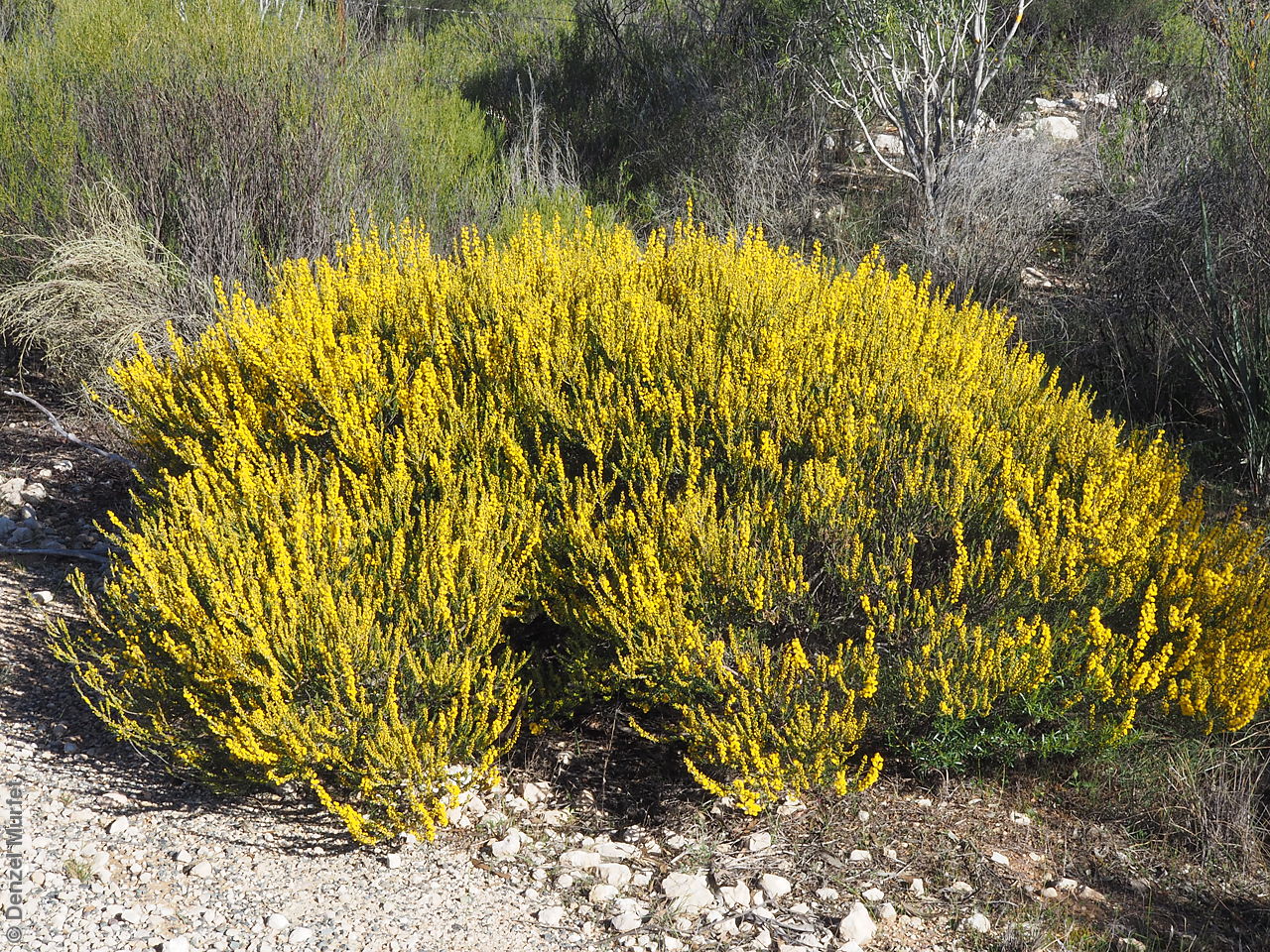
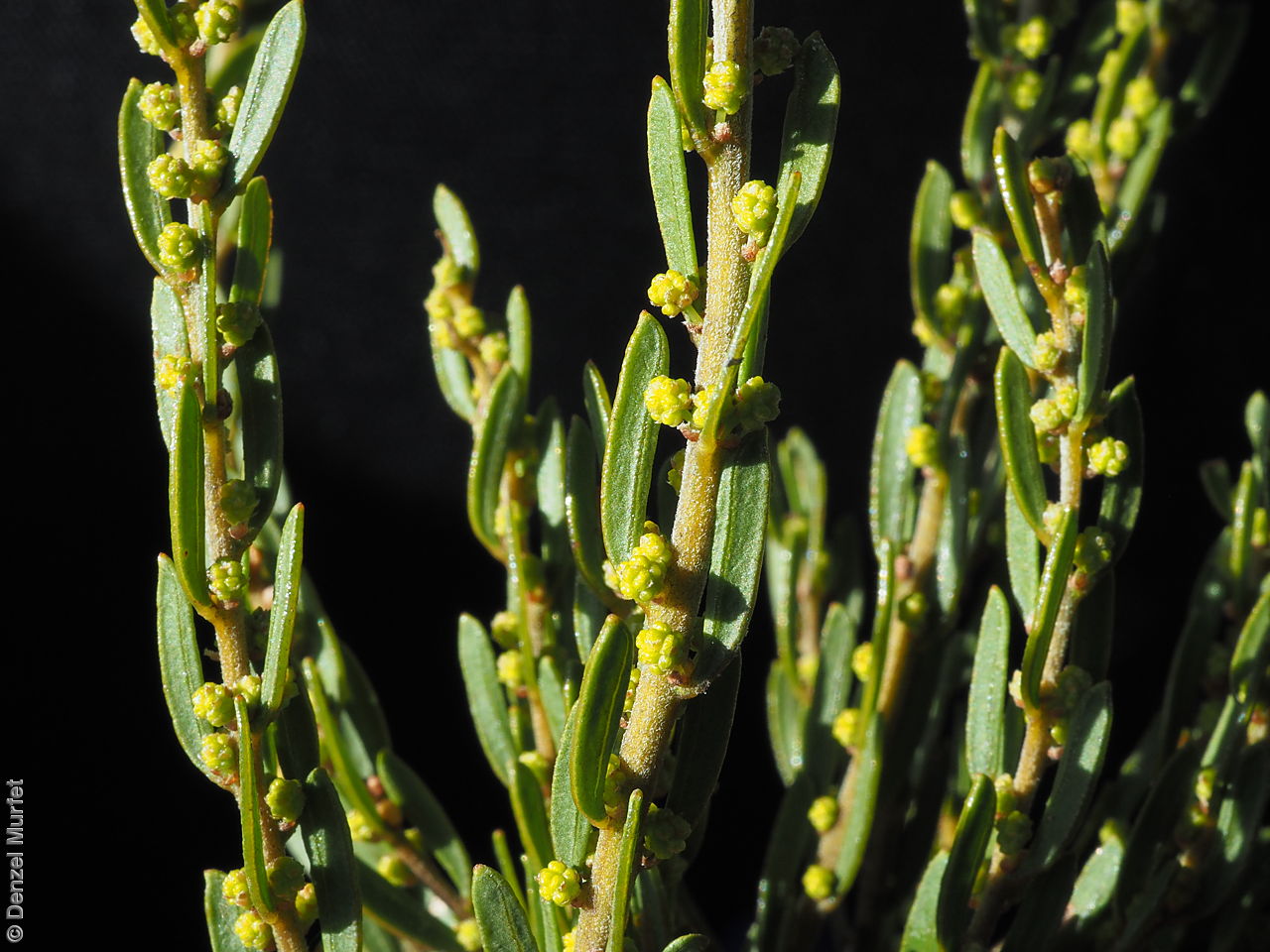
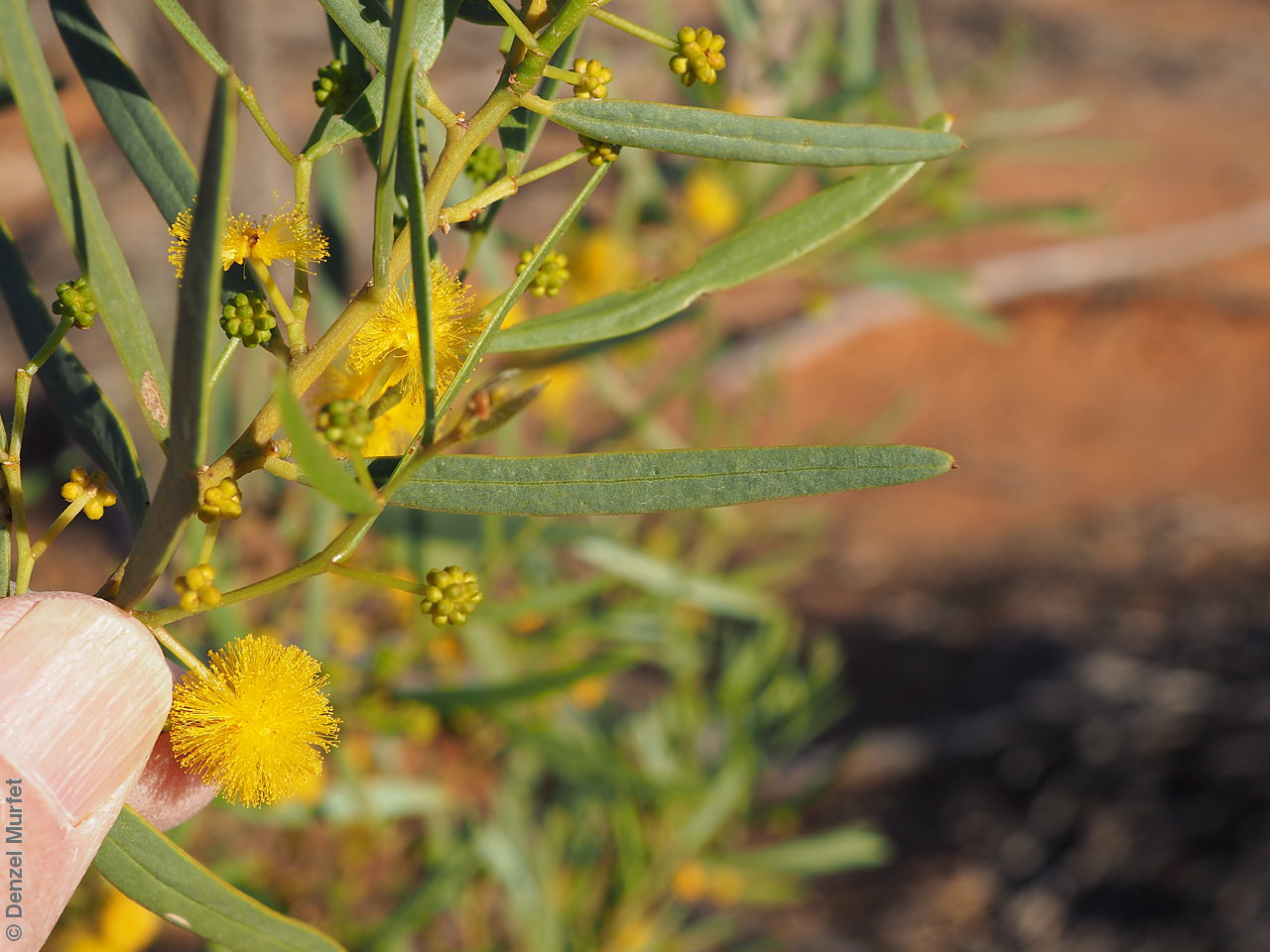
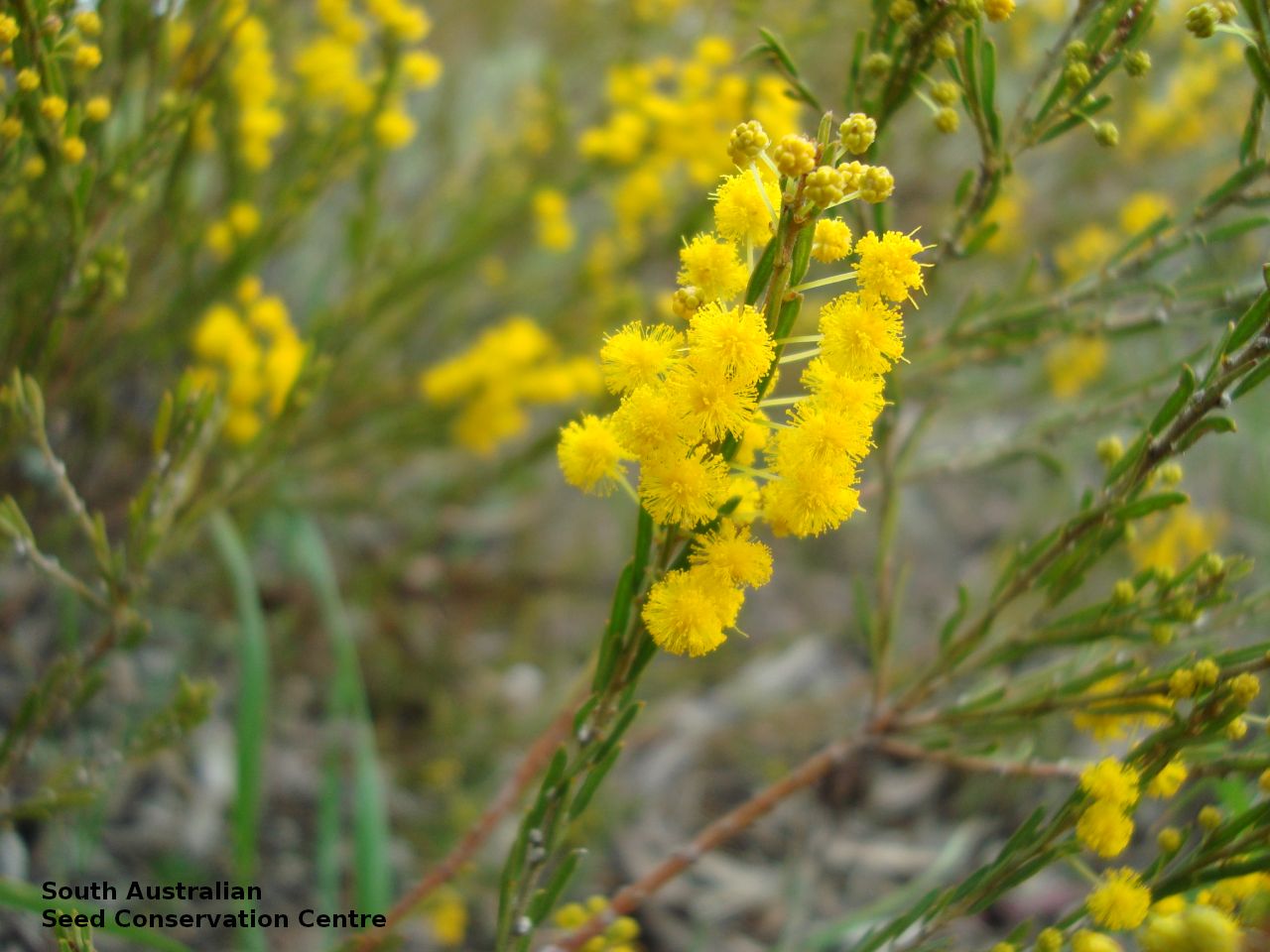
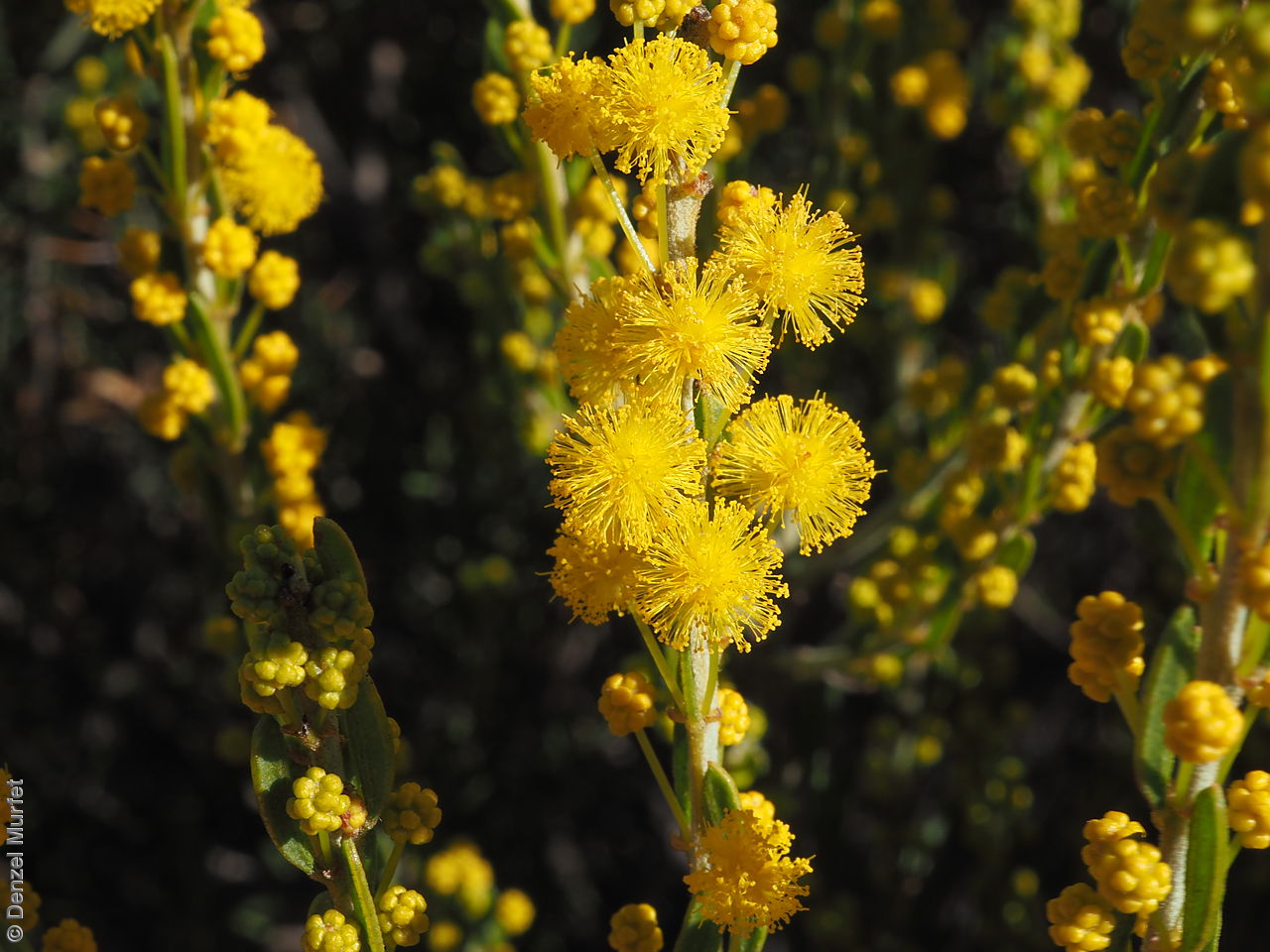
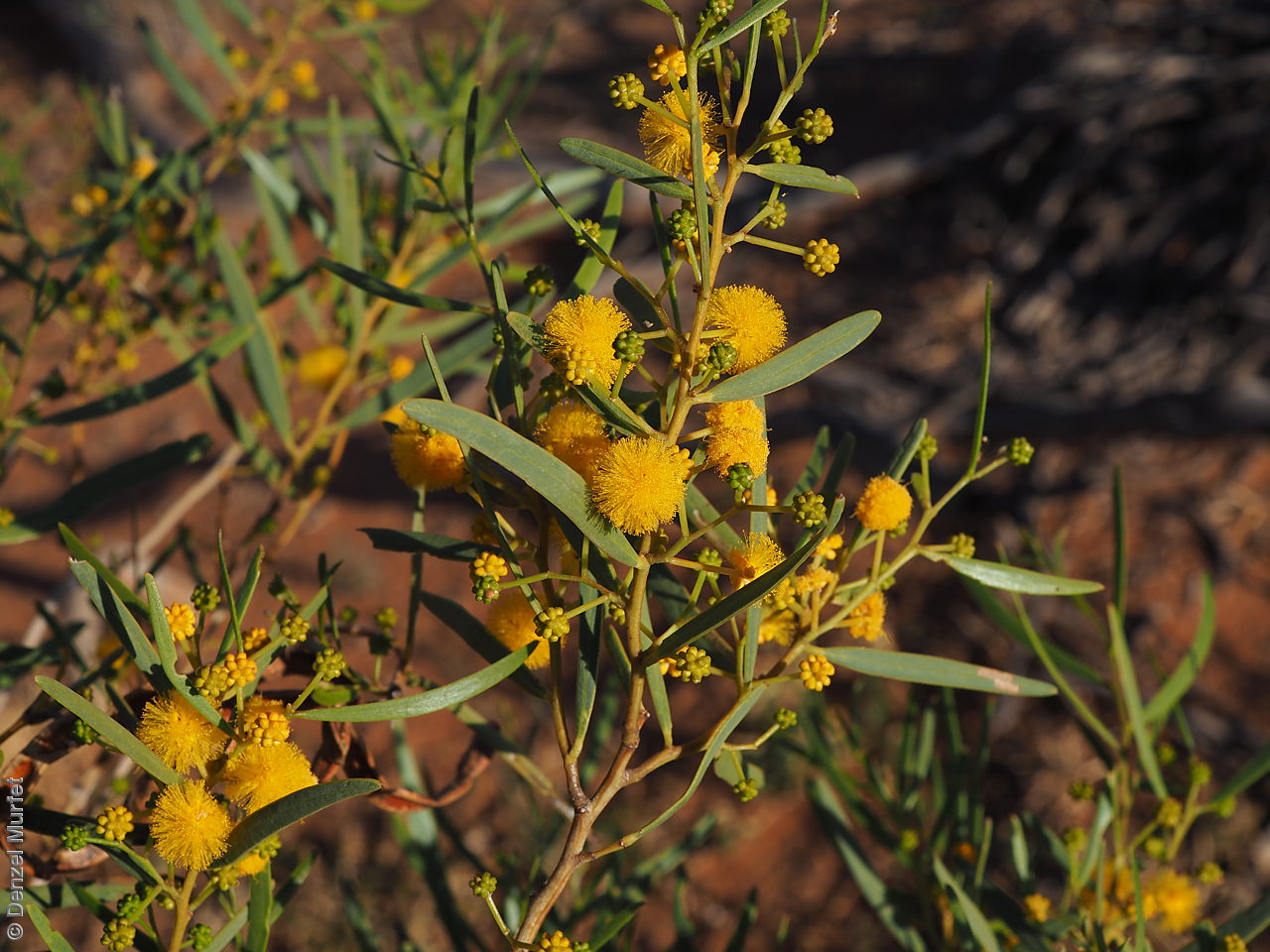
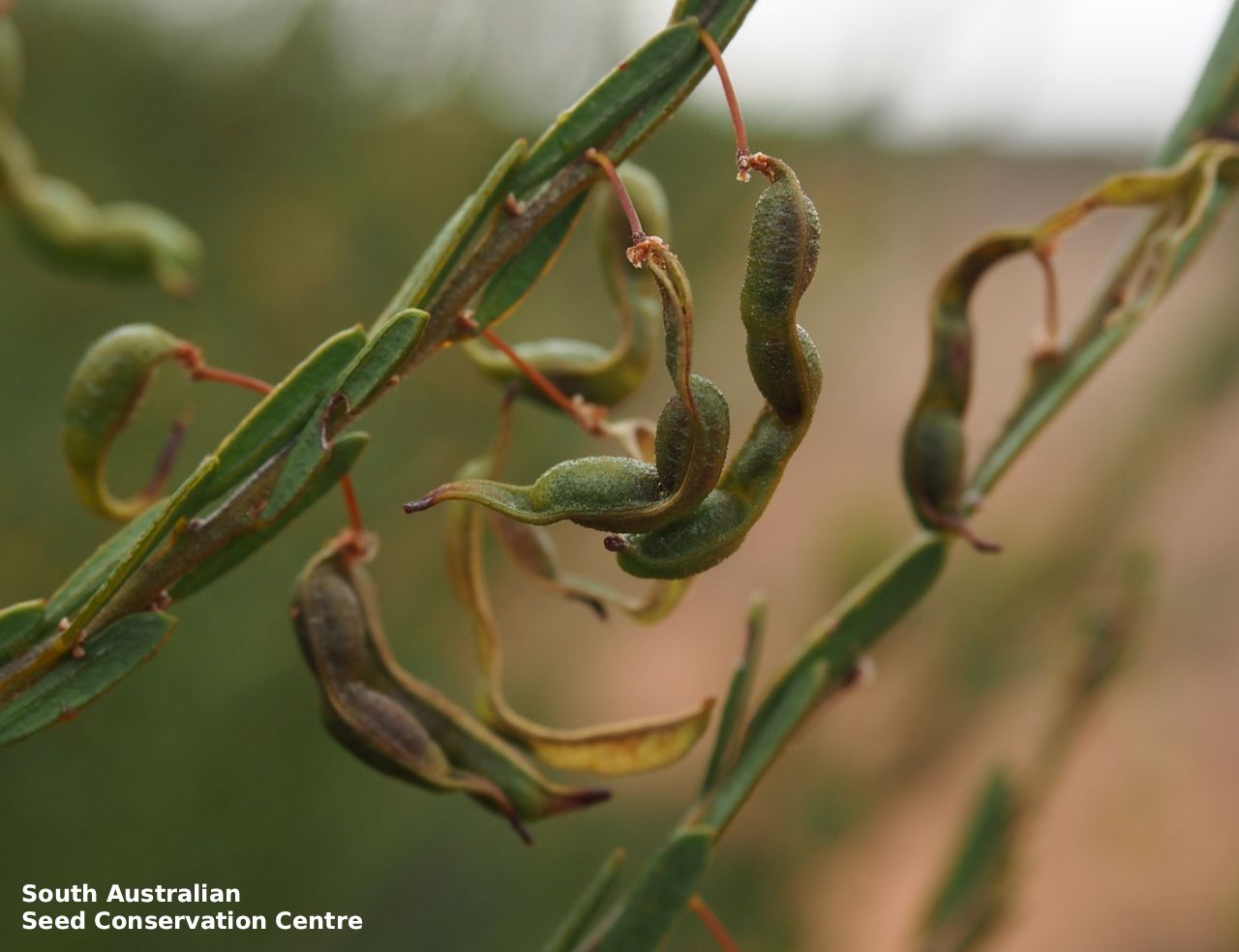
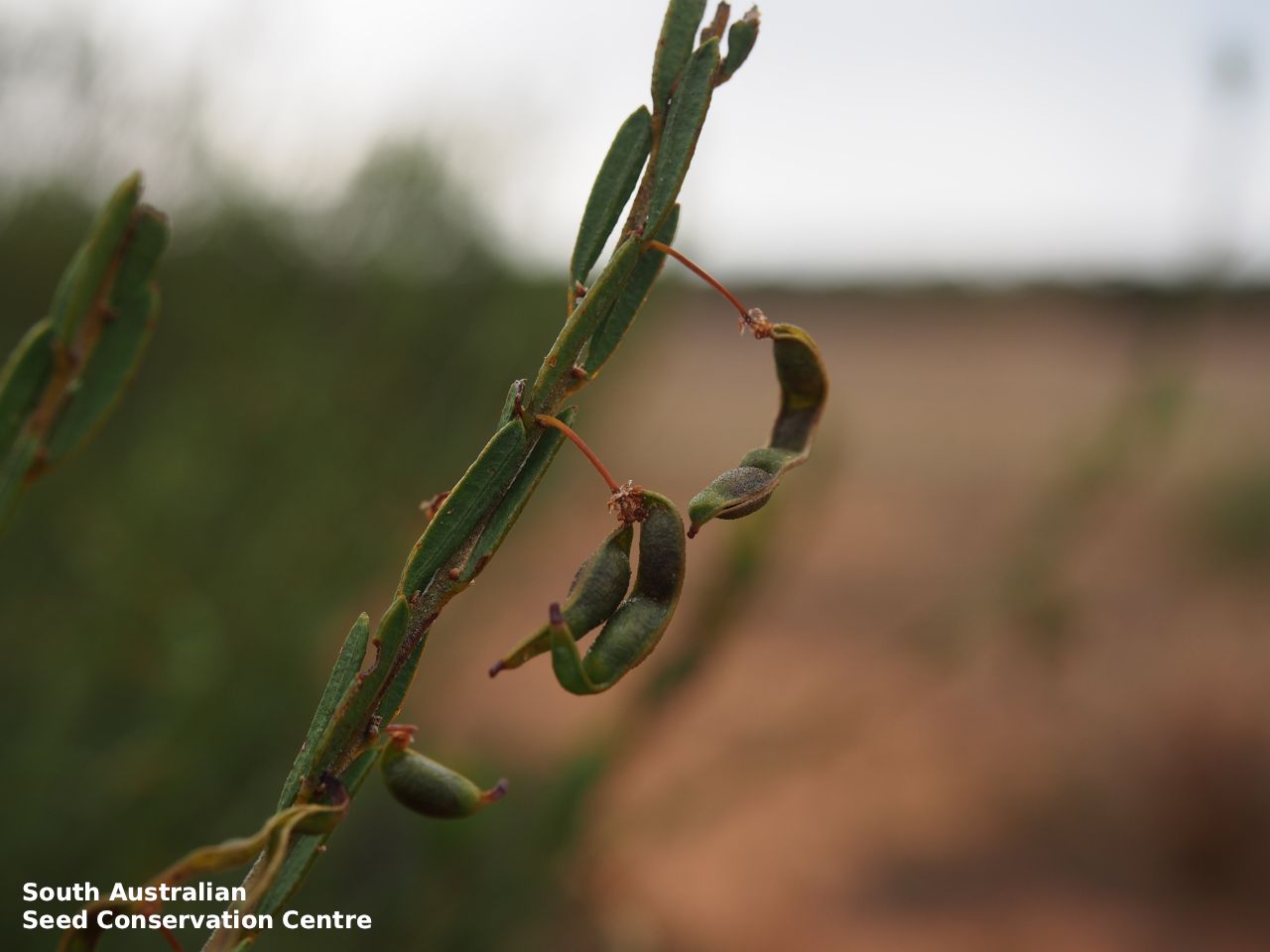
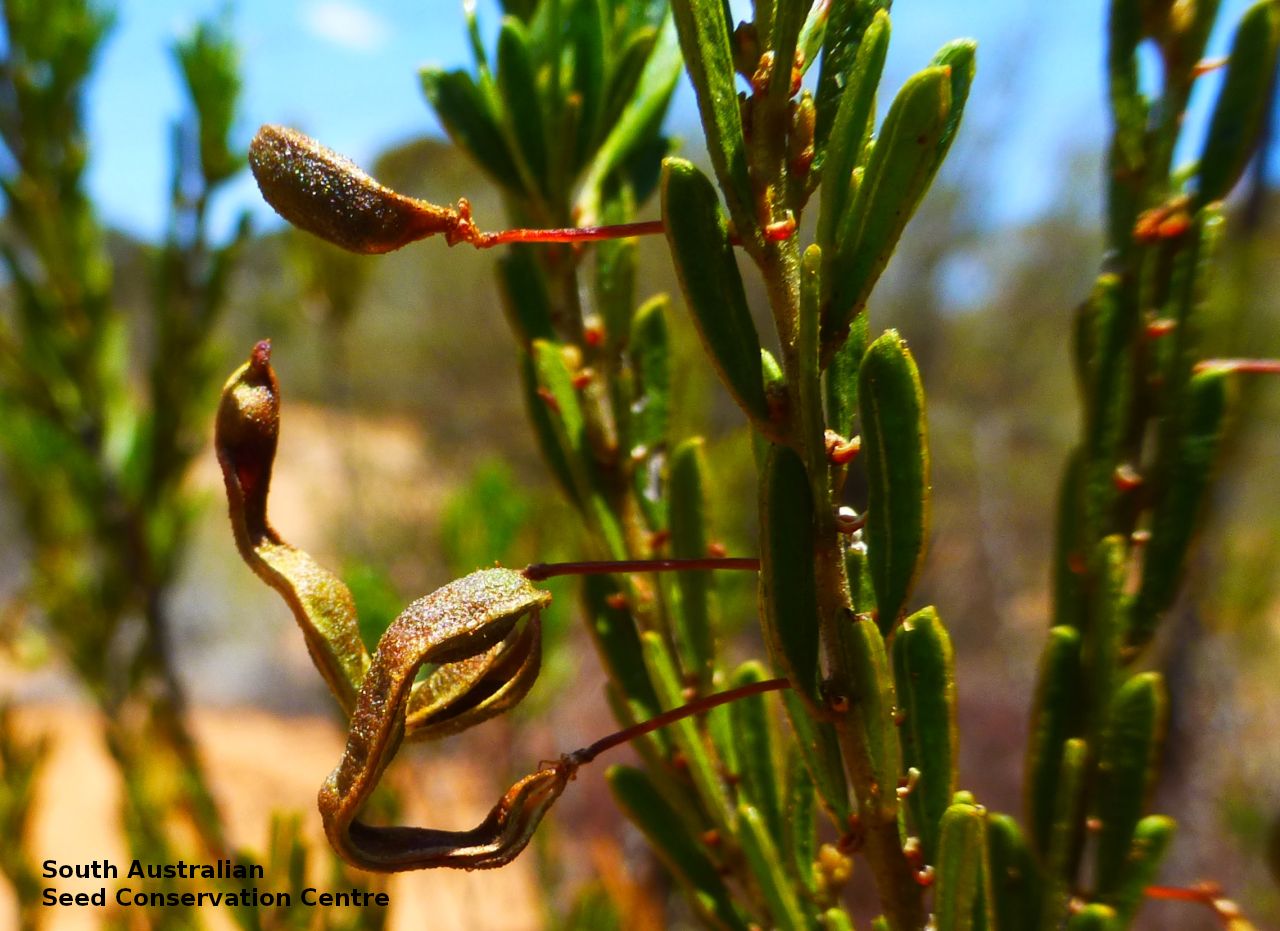
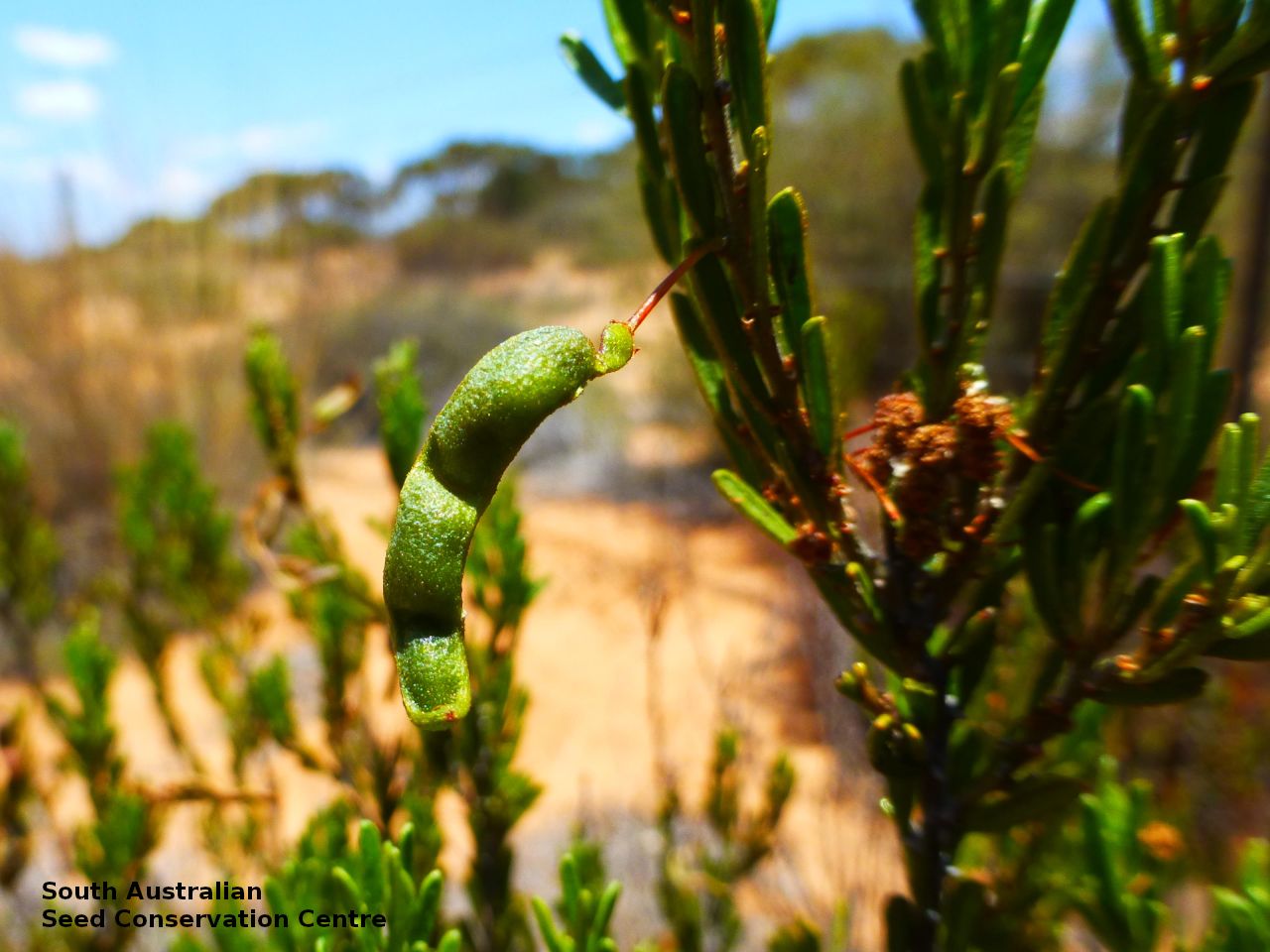
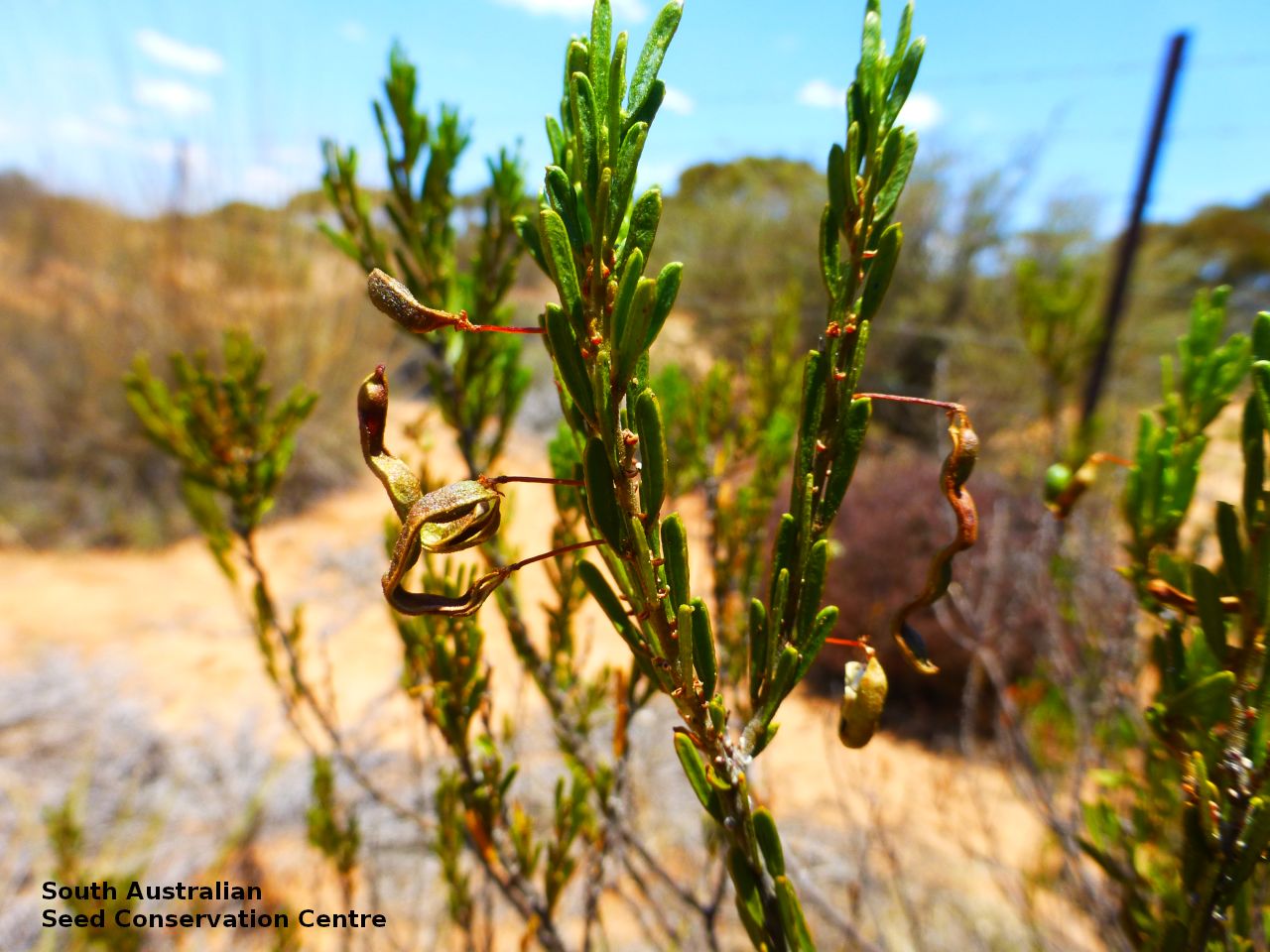
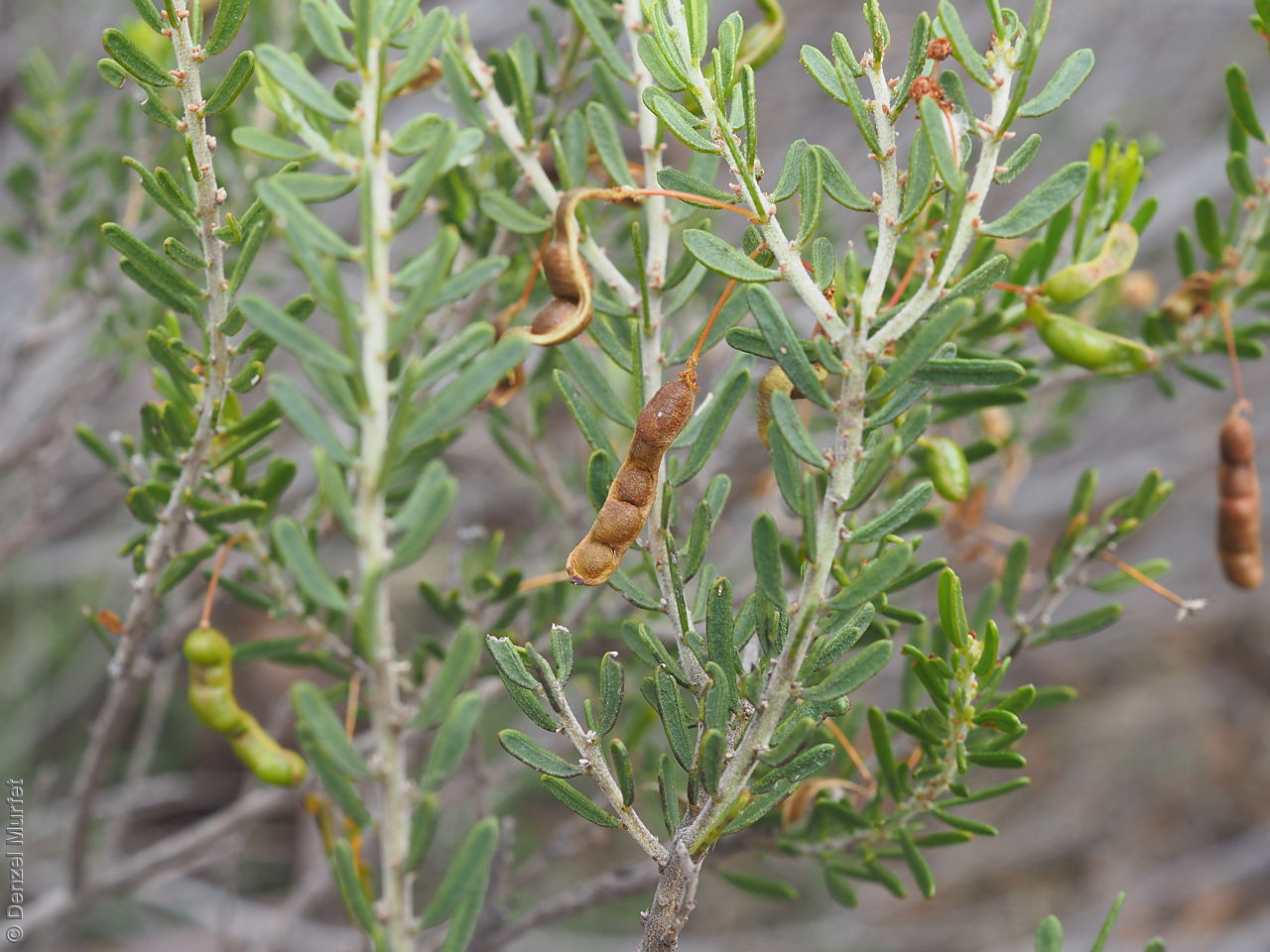
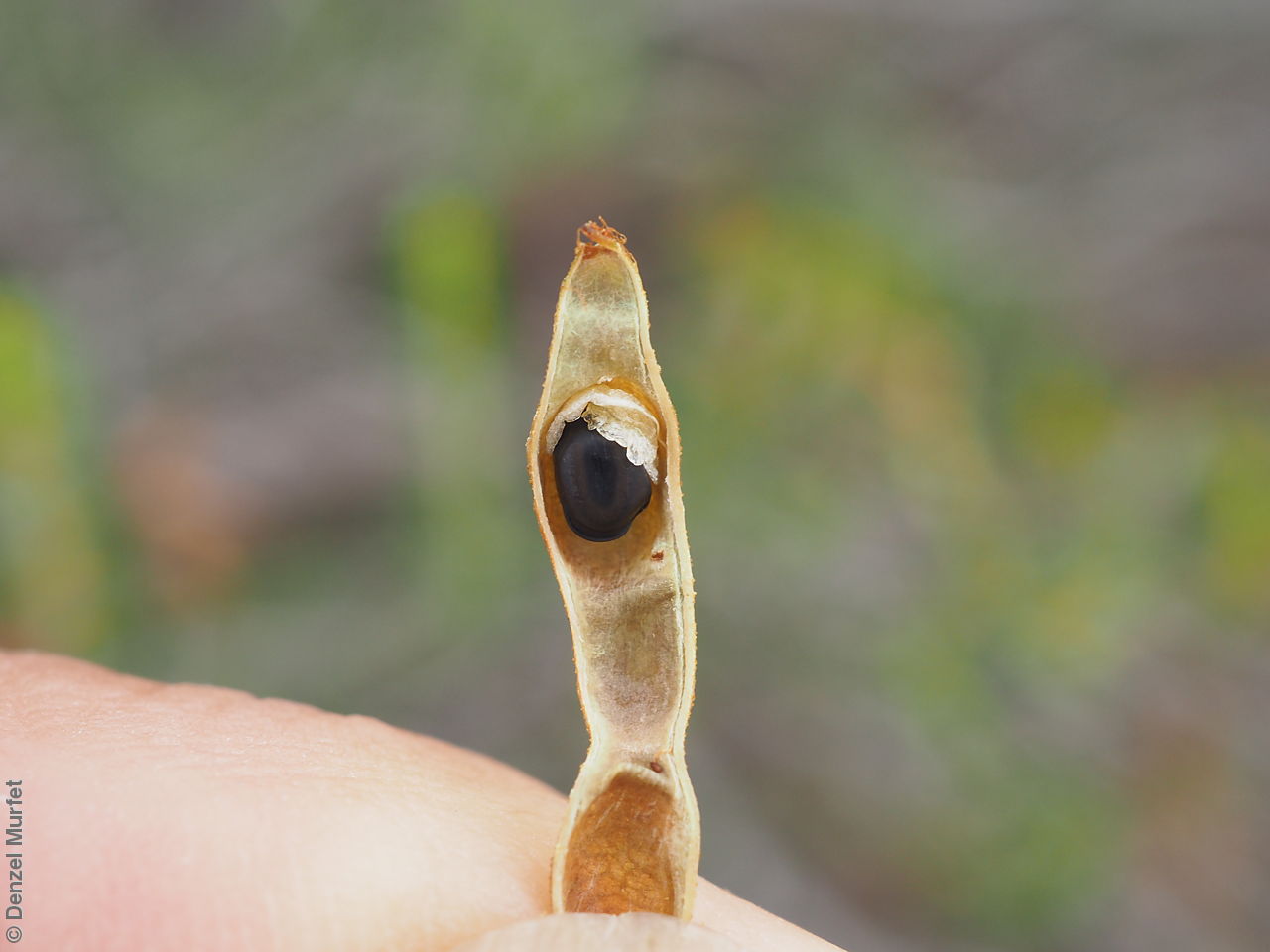
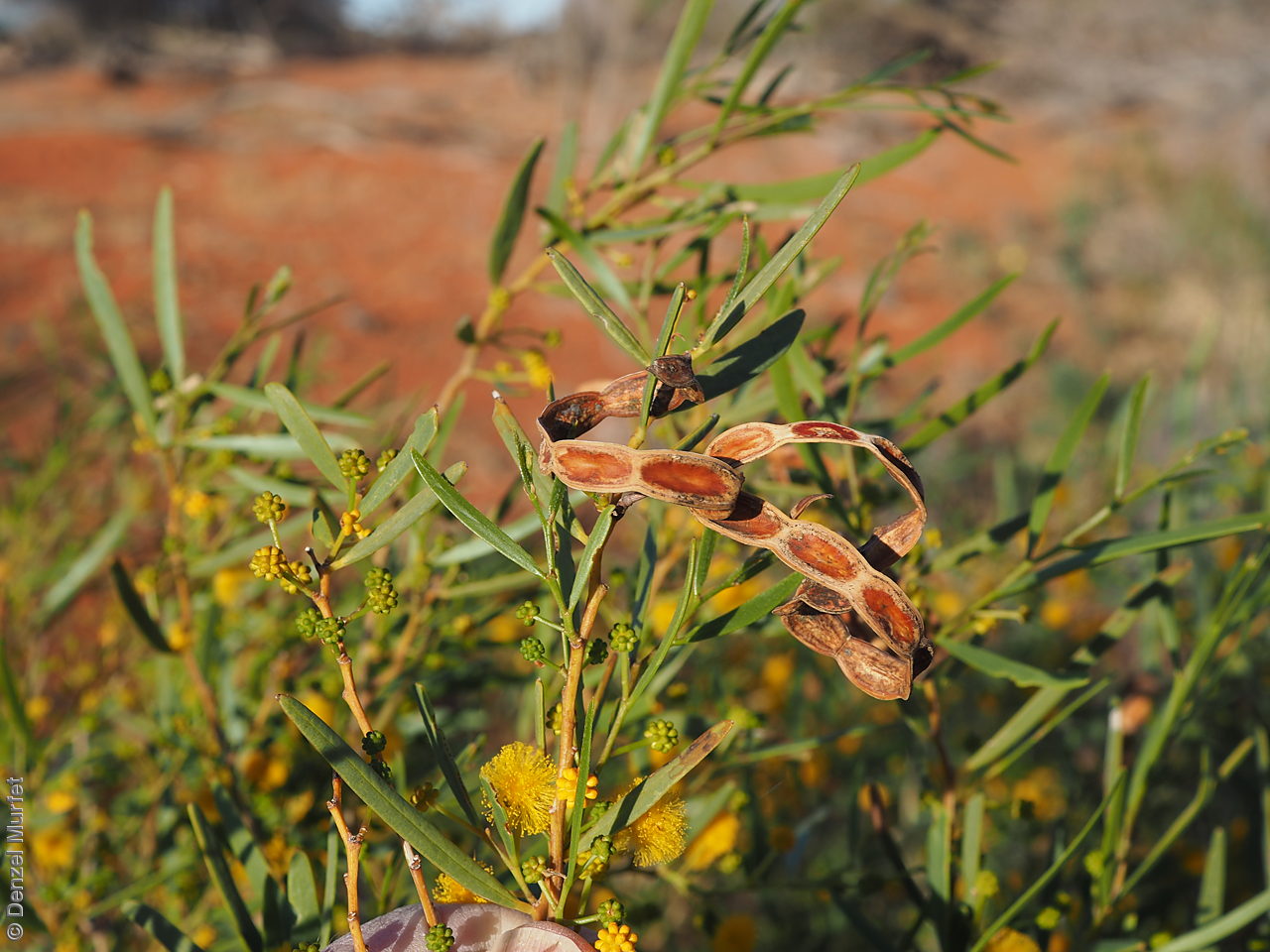
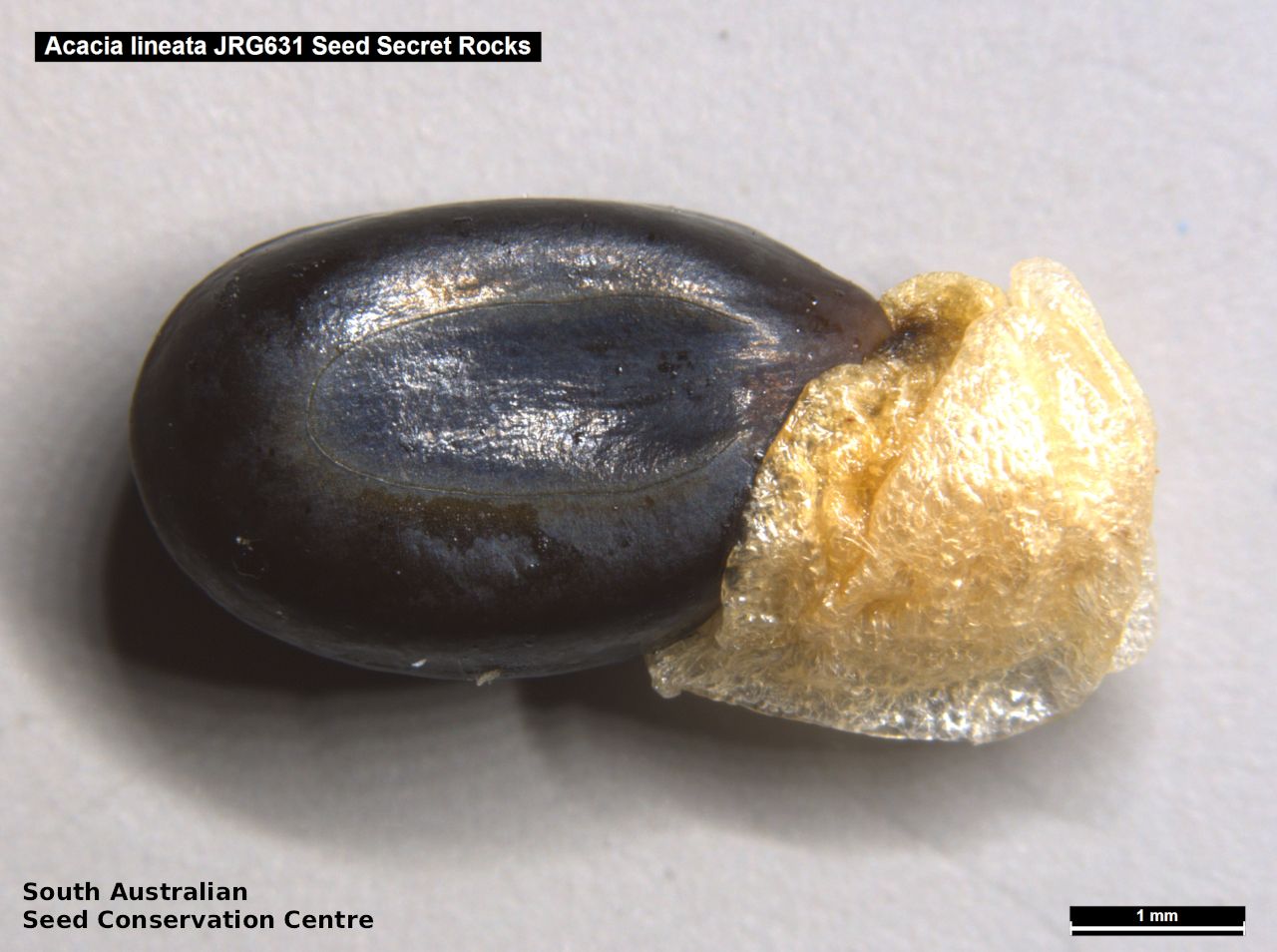
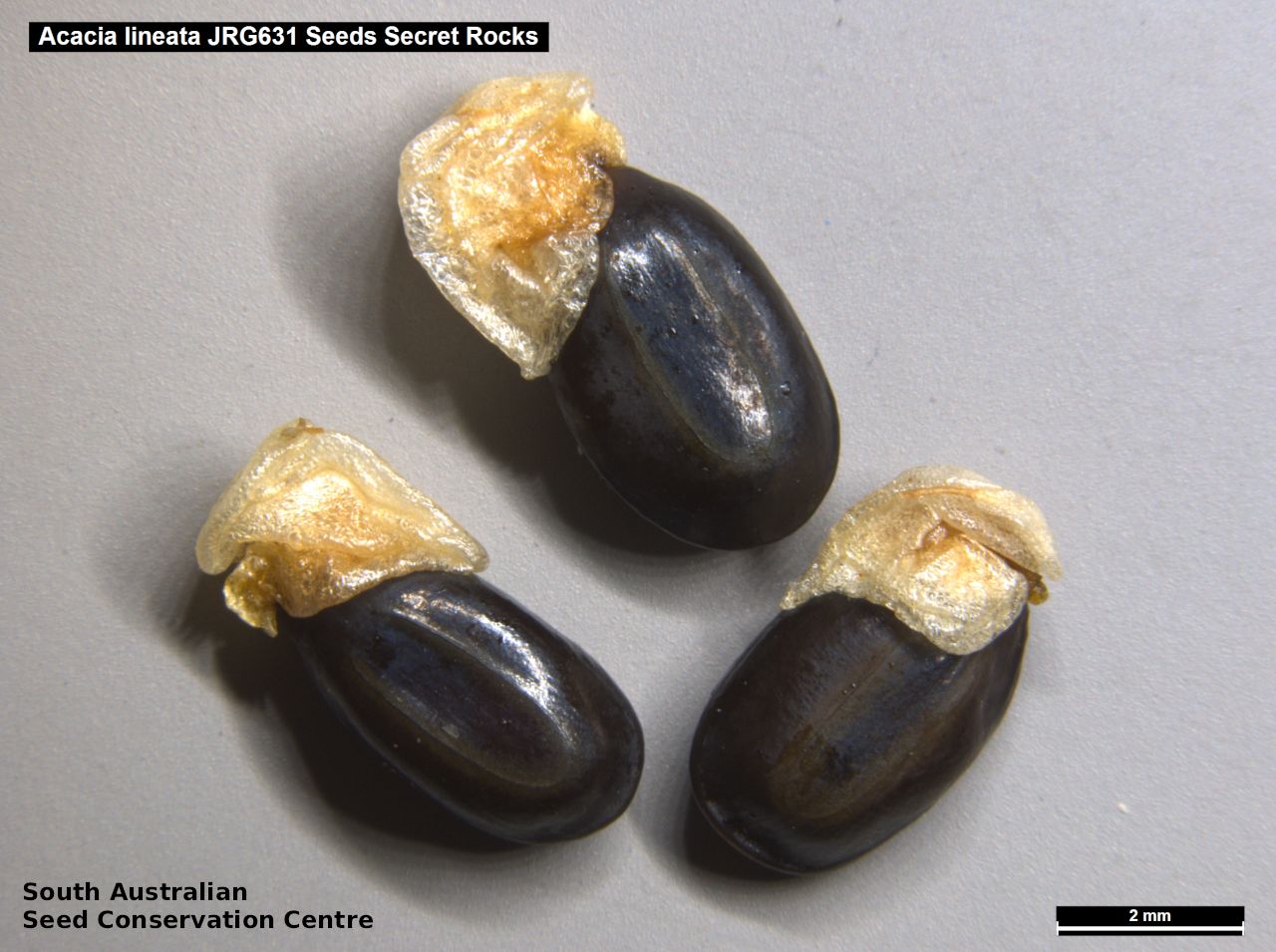
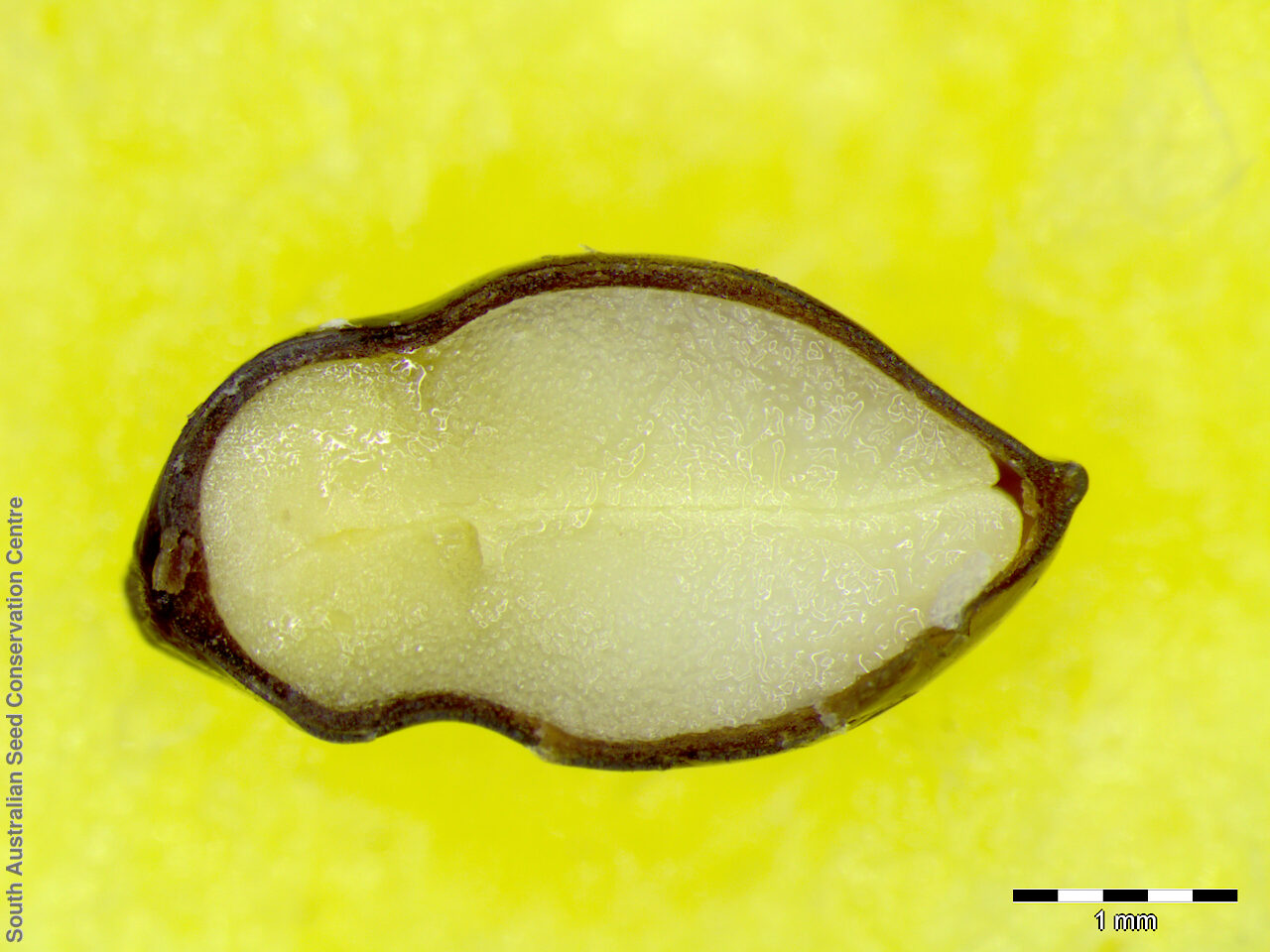

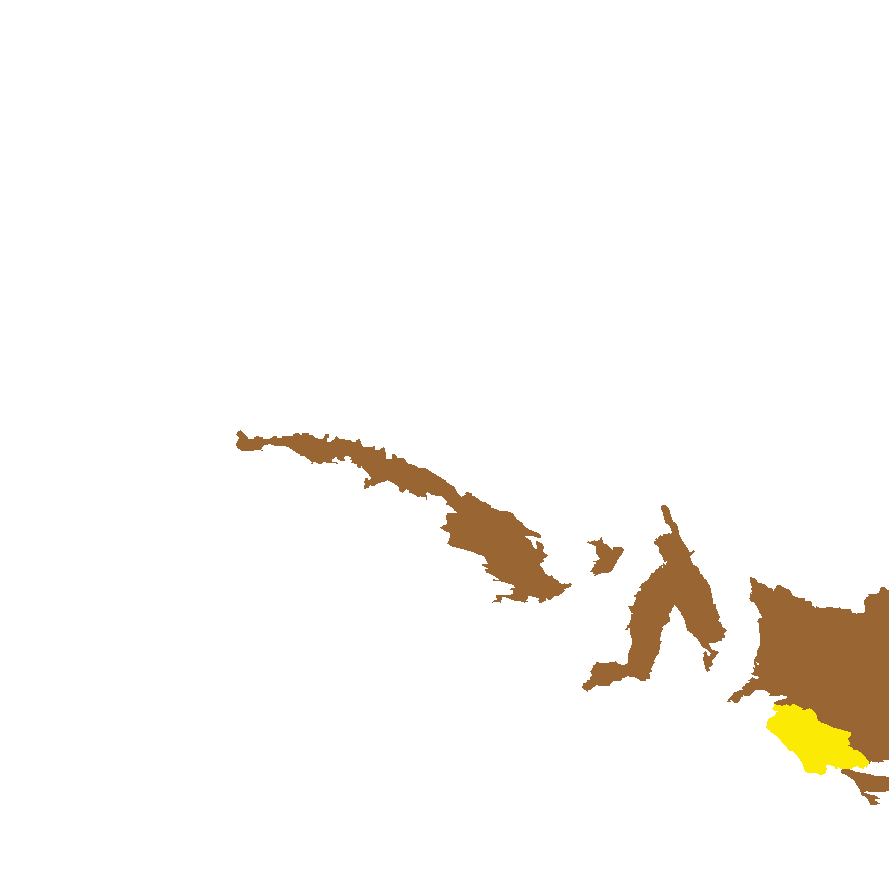
Botanical art
Prior names
Acacia centrinervia
Racosperma lineatum
Etymology
Acacia from the Greek 'akakia' and derived from 'ake' or 'akis' meaning a sharp point or thorn and 'akazo' meaning to sharpen. Dioscorides, the Greek physician and botanist used the word in the 1st century AD for the Egyptian thorn tree, Acacia arabica. Lineata from the Latin 'lineata' meaning streaked, marked with lines, referring to the parallel veins on the phyllodes.
Distribution and status
A small local occurrence on northern Yorke Peninsula but the main occurrence is in the Murray region. Grows in open scrub vegetation associated with Eucalyptus socialis and E. gracilis on brown calcareous soils. Also found in Queensland, New South Wales and Victoria. Native. Rare in South Australia. Common in the other States.
Herbarium regions: Eyre Peninsula, Murray, Yorke Peninsula, South Eastern
NRM regions: Eyre Peninsula, South Australian Murray-Darling Basin, South East
AVH map: SA distribution map (external link)
Plant description
Bushy, spreading, green or greenish-yellow shrubs to 1.75 m high and often the same or more across. Leaves narrow-linear to 15 mm long and 3 mm wide; erect, thick, sparsely pubescent, attenuated at the base, with a resinous vein close to and parallel with lower margin; apex acute; glands small, 1-2 mm from base. Inflorescences simple and axillary, solitary or twin with globular, yellow flower-heads. Flowering in August to October. Fruits are curved and twisted pod to 3 cm long and 3 mm wide, flattish but raised over the seeds; somewhat resinous with slightly thickened, yellowish margins . Seeds are hard, dark brown to black, oblong to elliptic seeds to 4 mm long and 2 mm wide. Seed embryo type is investing.
Seed collection and propagation
Collect seeds between November and December. Collect mature pods that are turning brown, with hard, dark seeds inside. Place the pods in a tray and leave to dry for 1-2 weeks or until the pods begin to split. Then rub the dried pods to dislodge the seeds. Use a sieve to separate any unwanted material. Store the seeds with a desiccant such as dried silica beads or dry rice, in an air tight container in a cool and dry place. From two collections, the seed viability was high, ranging from 86% to 95%. This species has physical dormancy that needs to be overcome for the seed to germinate (e.g. nicking or softening the seed coat). Germination 86%, seed scarified (chipped with scalpel), on 0.7% w/v agar, 12/12 dark/light, 200C. See http://data.kew.org/sid.
| Location | No. of seeds (weight grams) | Number of plants | Date collected | Collection number Collection location | Date stored | % Viability | Storage temperature |
|---|---|---|---|---|---|---|---|
| BGA | 700 (5.5 g) | 70 | 9-Dec-2009 | MJT252 Murray | 1-Jun-2010 | 95% | -18°C |
| BGA | 5,340 (63.04 g) | 12-Dec-2012 | DJD2423 Eyre Peninsula | 27-Feb-2014 | 86% | -18°C | |
| BGA | 11,600 (134.08 g) | 30+ | 18-Dec-2017 | JRG631 Eyre Peninsula | 30-Jun-2018 | 90% | -18°C, -80°C |
| BGA | 8,960 (92.250 g) | 15+ | 14-Dec-2022 | Secret Rocks NR Eyre Peninsula | 20-Jun-2023 | 85% | -18°C |
Number of plants: This is the number of plants from which the seeds were collected.
Collection location: The Herbarium of South Australia's region name.
% Viability: Percentage of filled healthy seeds determined by a cut test or x-ray.